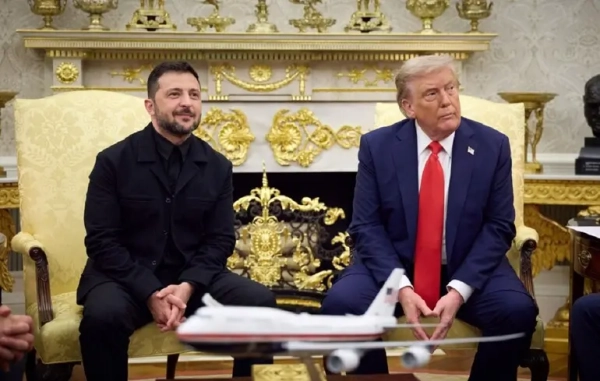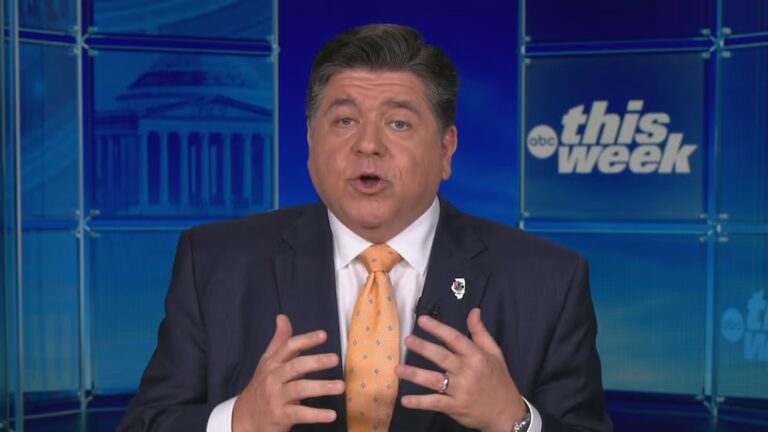What will “full” war between Israel and Hamas mean? And 6 other questions about the conflict.
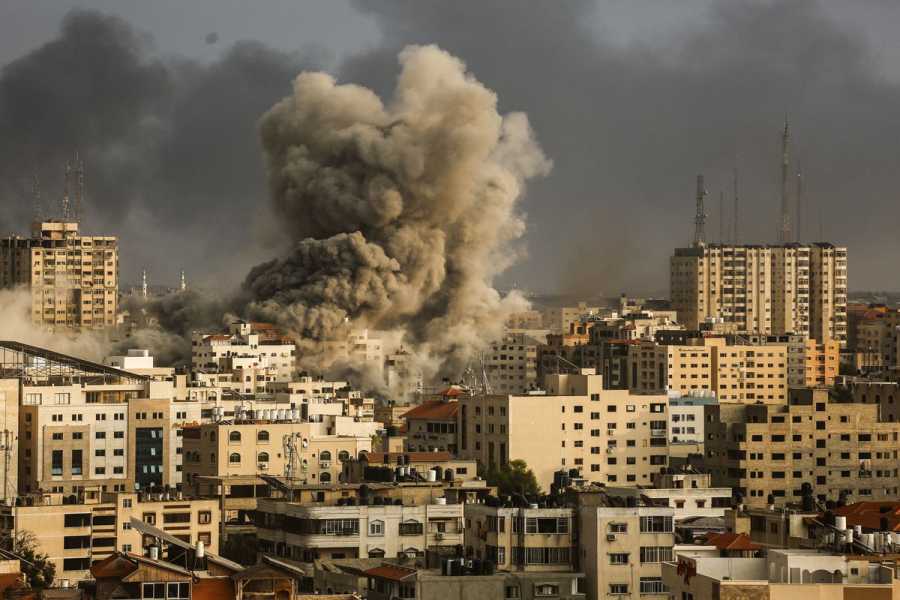
Israel declared war on Hamas, one day after the Palestinian militant group conducted a brutal attack. Israel has already launched what it describes as one of its largest aerial bombardments ever on the Gaza Strip. Sameh Rahmi/NurPhoto via Getty Images
Israel and Hamas are involved in their worst outbreak of violence in decades, one that has already claimed over 3,600 lives as of Saturday, and likely will claim many more.
The armed wing of the Palestinian group Hamas launched a massive, complex, and well-coordinated attack on Israel early on October 7 from the territory it controls in Gaza. Militants killed more than 1,200 people — including at least 25 US citizens — wounded 3,000, kidnapped civilians, including US citizens and reportedly soldiers, and fired rockets on Israeli civilians.
It was the most devastating and brutal assault Israel had suffered in decades; Israeli officials described it as their country’s 9/11. The horror of the attack has only become clearer in the days since, as reports of some — if not all — of the worst atrocities were confirmed.
In response, the country officially declared war against Hamas on October 8. The declaration comes after the Biden administration’s promise of additional support for Israel and the announced movement of several US warships and aircraft squadrons into the Eastern Mediterranean. Several countries, including Egypt and Jordan, have volunteered to try to defuse the situation diplomatically.
On Thursday, the IDF told Gazans in the north of the region — where approximately 1.1 million people live — that they should relocate to the south within 24 hours. According to Axios’s Barak Ravid, the IDF announcement indicated that the military would “continue to operate significantly in Gaza City” and will “make extensive efforts to avoid harming civilians.” On Sunday, another, brief evacuation window was opened to allow Gazans to flee south.
Many observers are taking this to indicate that a ground invasion is imminent.
UN officials have warned that such an evacuation — which includes UN staff and those sheltering in UN facilities — will be impossible without “devastating humanitarian consequences,” according to Stéfane Dujarric, spokesperson for the UN Secretary-General, quoted in the Axios story. Israel has shut its border with Gaza, and while Egypt has offered aid, its border with Gaza is effectively closed, leaving nowhere to go.
Israel had announced a siege against Gaza Monday after a barrage of airstrikes against the territory starting last Saturday, October 7, which has killed over 2,000 people there in the past week, according to local authorities. United Nations Secretary-General António Guterres denounced the siege in a Monday briefing, saying, “The humanitarian situation in Gaza was extremely dire before these hostilities; now it will only deteriorate exponentially.”
There were factors that likely contributed more immediately to this outbreak of violence — months of simmering conflict in Jerusalem and the West Bank over increased Israeli settlements, a far-right Israeli government that has been conducting a de facto annexation of the West Bank, and Israeli-Saudi negotiations about normalizing relations — but it is also a war decades in the making.
Most Gazans are either refugees from the 1948 Nakba, when mass numbers of Palestinians were displaced during the Arab-Israeli War, or descendants of those refugees, said Zaha Hassan, a human rights lawyer and fellow at the Carnegie Endowment for International Peace. They’ve lived under a strict blockade by Israel and Egypt since Hamas assumed control of the Gaza Strip in 2007, relying on foreign aid to access basic necessities. About one-third of Gazans live in extreme poverty, according to the Palestinian Central Bureau of Statistics.
The international community has largely abandoned efforts to find a political solution to this crisis. Now there is likely to be a long, bloody battle causing significant deaths on both sides, with Palestinians set to bear the brunt of the casualties and destruction going forward.
1. Where does the conflict currently stand?
Gaza residents were advised to evacuate the northern portion of the territory ahead of what many believe to be an impending ground assault. The Israeli military said Tuesday it had retaken and secured the border with Gaza; its retaliation against Hamas and bombardment of Gaza has ramped up.
Israeli Defense Minister Yoav Gallant announced Monday a siege on Gaza, on top of the blockade that Egypt and Israel enacted on the region 16 years ago after Hamas took power. So far, access to electricity, fuel, and food has been cut off to Gaza during the siege. Two million people are at risk of running out of water and tens of thousands are struggling to find basic necessities like food, water, and shelter, reports the New York Times.
The next phase of the war could include a ground invasion of Gaza; more than 360,000 reservists have been called up, a record number. Such an invasion would be highly fraught for the Israel Defense Forces, which will have to contend with chaotic fighting on Gaza’s dense streets. Netanyahu has been reluctant to put boots on the ground in Gaza since Israel formally withdrew troops in 2005 after 38 years of occupation.
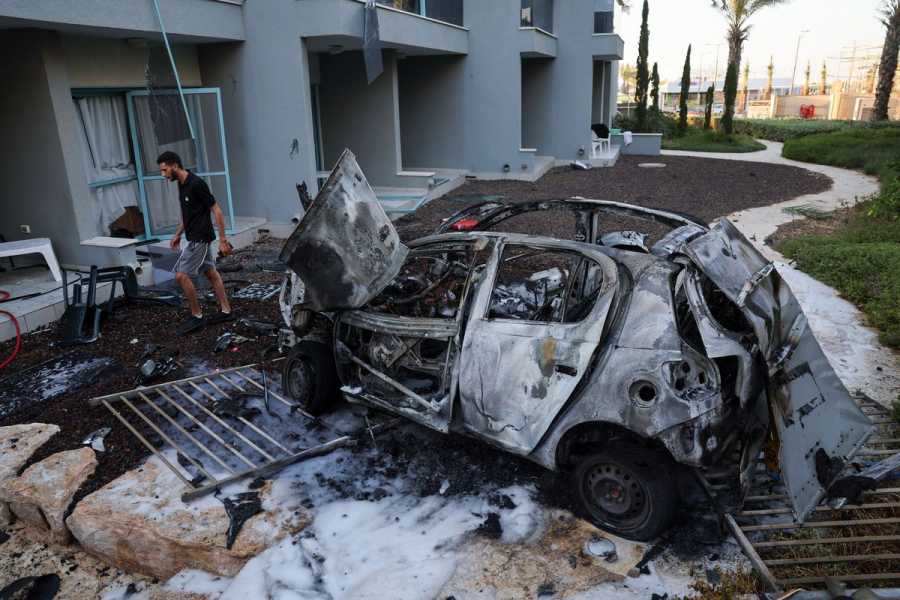
As part of Hamas’s initial attack, it launched rockets into Israel on October 7. A man is seen here walking next to a car destroyed by one of those rockets in the southern Israeli city of Ashkelon. Jack Guez/AFP via Getty Images
But now, given political pressures — not to mention the fact that Hamas and Palestinian Islamic Jihad militants are holding Israeli civilian and military hostages inside Gaza — a ground invasion is certainly possible.
“We have to go in,” Netanyahu reportedly told US President Joe Biden last week, according to Axios’s Barak Ravid.
It’s not yet clear how these decisions might be affected by the emergency “unity government” Netanyahu formed with an opposition party Wednesday that will reduce the influence of some far-right members of Netanyahu’s government and create a small war cabinet to oversee the fighting.
In addition to those killed so far, thousands of Israelis have been wounded. At least 64 people have been taken hostage — the Israeli military estimates that number may be as high as 150 — and Hamas officials have threatened to execute one civilian captive each time IDF strikes hit a civilian target in Gaza without prior warning. “These actions constitute heinous violations of international law and international crimes, for which there must be urgent accountability,” UN independent experts said in a statement Thursday.
Palestinian casualties are also high, as Israel bombards the densely populated strip. As of Saturday, IDF air strikes have injured more than 9,200 Gazans and killed more than 2,450 people, according to local authorities. On Tuesday, the IDF said it had killed 1,500 Hamas militants in fighting; it was not immediately clear how many of those casualties overlap with previously reported figures from Palestinian authorities. Some 218,600 people are sheltering in facilities run by UNRWA, the UN agency that assists Palestinian refugees; two of those facilities have been hit during the bombardment.
“Hospitals are overcrowded with injured people, there is a shortage of drugs and [medical supplies], and a shortage of fuel for generators,” Ayman Al-Djaroucha, MSF deputy coordinator in Gaza, said Sunday. Ambulances are also unable to run, according to MSF staff, as they are being hit in airstrikes.
Israeli security forces and some settlers have killed 54 Palestinians in the West Bank amid clashes as of Saturday morning, according to the Palestinian Ministry of Health.
—Ellen Ioanes
2. What do I need to understand about Gaza and Israel’s relationship to understand today?
Palestinians living in Gaza and Israelis have always been deeply connected.
With Israel’s victory in the 1967 War, it conquered Gaza and became an occupying power overseeing the Palestinians living there. (Egypt had controlled the territory from 1948 to 1967.) Israel had not always so severely fenced off Gaza from the rest of the world or blockaded flows in and out of it. For several decades, Palestinians from Gaza worked in the Israeli economy. Starting in 1970, Israel established settlements in the territory and military installations. Israel restricted most Palestinians’ movement in and out of Gaza from the onset of the Second Intifada, or uprising, in 2000.
Israel withdrew its security forces and settlements from Gaza in 2005, but the territory nevertheless has remained effectively under Israeli occupation. Hamas won legislative elections in 2006, and amid a violent split with the Fatah-run Palestinian Authority in the occupied West Bank, the Islamist movement assumed control of the territory the next year. Israel has blockaded the territory since. The more than 2 million people in Gaza live in what human rights groups have called an “open-air prison.” The territory’s airspace, borders, and sea are under Israeli control, and neighboring Egypt to the south has also imposed severe restrictions on movement.
The United Nations describes the occupied territory as a “chronic humanitarian crisis.”
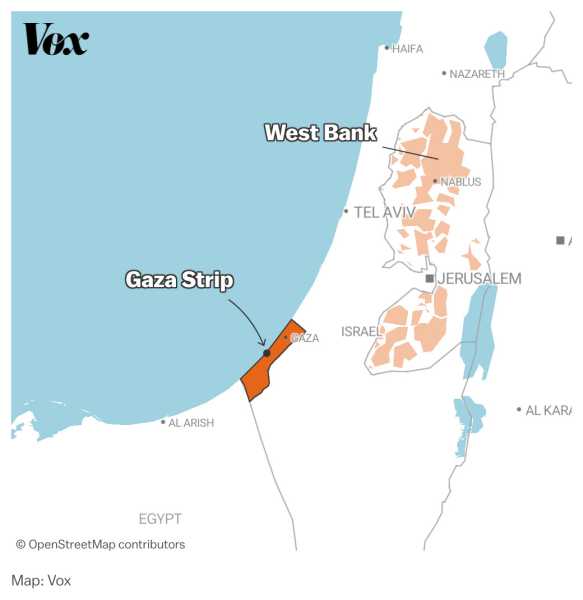
“This pressure being put on Palestinians — it just assumes that they’re insignificant and they will tolerate any degree of humiliation, and that’s just not true,” Rashid Khalidi, the Columbia University historian, says.
Israel has launched intense military operations on the densely populated territory many times over the past decade and a half in response to rocket attacks from Palestinian militants. The Israeli military has called it “mowing the grass”: a tactic of conducting semi-regular attacks on alleged terrorist cells to take out leaders and new militant groups, which also kill noncombatants and destroy civilian infrastructure in the process. But mowing the lawn almost by definition does not address the root causes of terrorism but only reduces the level of Hamas’s violence temporarily and perpetuates an escalating cycle of violence. Experts say that there is no military solution to the political problem posed by Hamas.
Hamas’s wanton violence does not by any means represent the views of all Palestinians. A survey of Palestinians from this summer showed that if legislative elections were held for the first time since 2006, about 44 percent of Gazan voters would choose Hamas. But there has been no opportunity for elections, and so in addition to Israeli military action, Palestinians living in Gaza must endure an unrepresentative government that imposes some Islamic tenets, implements repressive policies against LGBTQ people, and uses abusive policies against detainees.
Even as the situation for Palestinians living in Gaza has gotten worse in the past 15 years, less and less attention from world leaders and US administrations has been paid to it. Yet the cause of Palestine — to secure an independent, sovereign, and viable state — continues to galvanize grassroots support in the Arab Middle East and the Muslim world.
—Jonathan Guyer
3. But why did Hamas launch such a huge attack now?
According to Hamas itself, the attack was provoked by recent events surrounding the Temple Mount, a site in Jerusalem holy to Jews and Muslims alike. Earlier this month, Israeli settlers had been entering the al-Aqsa Mosque atop the mount and praying, which Hamas termed “desecration” in a statement on their offensive (which they’ve named Operation Al-Aqsa Storm).
It’s implausible, to put it mildly, that Hamas was simply outraged by these events and is acting accordingly. This kind of complex operation had to be months in the making; Hamas sources have confirmed as much to Reuters.
But at the same time, Hamas’s choice of casus belli does tell us something important.
Palestinian politics is defined, in large part, by how its leadership responds to Israel’s continued occupation — both its physical presence in the West Bank and its economically devastating blockade of the Gaza Strip. Hamas’s strategy to outcompete its rivals, including the Fatah faction currently in charge of the West Bank, is to channel Palestinian rage at their suffering: to be the authentic voice of resistance to Israel and the occupation.
And the past few months have seen plenty of outrages, ones even more significant than events in Jerusalem. Israel’s current hard-right government, dominated by factions that oppose a peace agreement with the Palestinians, has been conducting a de facto annexation of the West Bank. It has turned a blind eye to settler violence against West Bank civilians, including a February rampage in the town of Huwara.
Israel’s focus on the West Bank may also have created an operational opportunity for Hamas. According to Uzi Ben Yitzhak, a retired Israeli general, the Israeli government had deployed most of the regular IDF forces to the West Bank to manage the situation there — leaving only a skeleton force at the Gaza border and creating conditions where a Hamas surprise attack could succeed.
There are also geopolitical concerns at work, with some experts arguing this was intended to fundamentally shift how the world approaches Israeli-Palestinian relations.
Israel is currently in the midst of a US-brokered negotiation to normalize relations with Saudi Arabia, a major follow-up to the Abraham Accord agreements struck with several Arab countries during the Trump administration. Normalization is widely seen among Palestinians as the Arab world giving up on them, agreeing to treat Israel like a normal country even as the occupation deepens. Hamas could well be trying to torpedo the Saudi deal and even trying to undo the existing Abraham Accords. Indeed, a Hamas spokesperson said that the attack was “a message” to Arab countries, calling on them to cut ties with Israel. (It’s worth noting that planning for an attack this complex very likely began well before the Saudi negotiations heated up.)
Together, these are all conditions in which it makes more strategic sense for Hamas to take such a huge risk.
To be clear: Saying it makes strategic sense for Hamas to engage in atrocities is not to justify their killing of civilians. There is a difference between explanation and justification: The reasoning behind Hamas’s attack may be explicable even as it is morally indefensible.
We’ll find out more in the coming weeks and months about which, if any, of these conditions proved decisive in Hamas’s calculus. But they’re the necessary background context to even try to begin making sense of this week’s horrific events.
—Zack Beauchamp
4. How did this become an outright war, worse than we’ve seen in decades?
Hamas’s attack was well-coordinated, massive in scale, included an unprecedented incursion into Israeli territory, and managed to evade the Israeli security apparatus, which is why it was so surprising — and able to inflict so much carnage.
“The Israelis pride themselves on having world-class intelligence, with the Mossad, with Shin Bet, with Israeli military intelligence,” Colin Clarke, director of research at the Soufan Group, a global intelligence and security consultancy, told Vox. “They do — from the most exquisite human sources to the most capable technical intelligence gathering capabilities [including] cyber and signals intelligence.”
As explained above, there are both longstanding and immediate reasons a conflict of some sort was likely.
“The message has been clear to Palestinians,” Hassan said. “They can’t wait on some Arab savior and they can’t wait on the US government to act as peace broker — that they’re going to have to take matters into their own hands, whatever that looks like.”
But the sheer brutality and devastation has been a shock to Israeli society. Rhetoric from Netanyahu and the IDF has reflected the “vengeance,” as Natan Sachs, director of the Center for Middle East Policy at the Brookings Institution, characterized it, that Israeli society is feeling in the wake of the devastating attack.
“In a way, this is our 9/11,” IDF spokesperson Lt. Col. Richard Hecht said in a video statement posted to the social network X on October 8. Videos have circulated showing dead Israelis, as well as Israeli civilians being captured by Hamas militants, presumably to be held in Gaza. Though Israeli towns near the Gaza border are now largely under IDF control, the full understanding of the horror of the Hamas attack continues to grow, with many Israeli hostages remaining in captivity and some presumed dead. Hamas has threatened to execute captive Israelis if IDF operations strike civilian targets in Gaza without warning, the Associated Press reports.
Netanyahu formally declared war on Hamas one day after the attack. That war effort will be governed by a small “war management cabinet” composed of Netanyahu, Defense Minister Yoav Gallant, and Benny Gantz, the leader of the opposition National Unity party who joined Netanyahu in an emergency unity government Wednesday. Gadi Eizenkot, another former army chief, will join the broader security cabinet, potentially instilling more trust in a government that has widely been seen to have failed at its most important task: to keep Israelis safe.
Yair Lapid, Netanyahu’s main political rival, has refused to join the unity government as long as ministers like Itamar Ben Gvir, the right-wing national security minister who has repeatedly made anti-Arab comments, remain on the security cabinet.
—EI
5. What will declared war mean?
No one knows how this war will play out. But given Israel’s highly advanced military, its response to Hamas’s attack will be massive and devastating in turn. On Monday, October 9, Netanyahu vowed to attack Hamas with a force “like never before” and has vowed to kill every member of the group. The same day, Israel said it would place Gaza under a “complete siege” and announced it called up 300,000 military reservists, a number that’s now grown by 60,000. Many analysts expect that Israel will send in ground troops.
“I ordered a complete siege on Gaza. We are fighting human animals, and we act accordingly,” Gallant said. “As of now, no electricity, no food, no fuel for Gaza.”
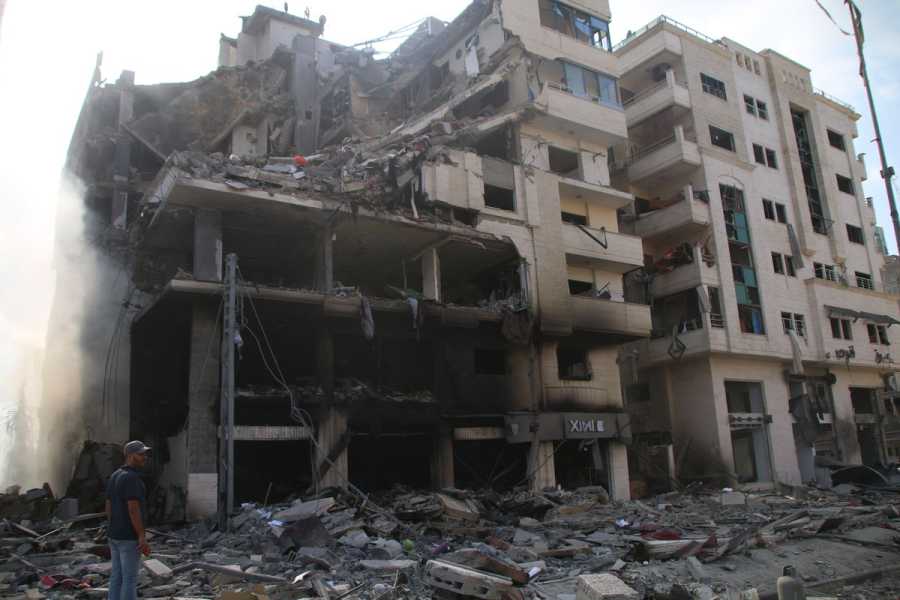
Buildings damaged and destroyed by Israeli airstrikes on October 10, 2023, in Gaza City. Ahmad Hasaballah/Getty Images
But Gaza has been described as effectively living under siege since 2007, as documented by United Nations experts, journalists, and human rights researchers.
What will change is the scale of violence: It has already exceeded the most recent severe conflict between Israel and Hamas in 2021, and is likely to get much worse.
Already, Israel has launched what it describes as one of its largest aerial bombardments ever on Gaza. After barrages of artillery and rocket fire, ground operations to target Hamas fighters are likely to follow.
Relations between Israel and Palestinians have always been asymmetrical: Israel, an undeclared nuclear power, has received tens of billions of dollars of US military aid. This past weekend, Hamas ruptured Israeli society with wanton violence and mass killing. But it is the Israeli state that retains the capacity to perpetuate an all-out war on the Gaza Strip. Israel has often responded disproportionately to suicide bombings and rocket attacks from Hamas, partially as a deterrent strategy. The result, however, is an intensity of violence in an occupied territory where residents have nowhere to run, and where civilians are regularly killed in Israel’s assaults on Hamas targets.
—JG
6. How is the US responding?
Biden and Netanyahu’s relationship had grown strained over the Israeli leader’s rightward drift and recent judicial overhaul — but after the attack, the US is standing firmly behind its closest ally in the Middle East.
“In this moment of tragedy, I want to say to them and to the world and to terrorists everywhere that the United States stands with Israel,” Biden said last Saturday. Tuesday, after his third phone call with Netanyahu, he again denounced the “pure, unadulterated evil” of Hamas’s attack on civilians, and reiterated that there should “be no doubt: The United States has Israel’s back.”
The US has pledged to send additional military materiel, “including munitions,” according to a news release from the Department of Defense, with the first tranche of security assistance already headed to Israel. At a press conference in Israel on Thursday, Secretary of State Anthony Blinken told Israelis that America “will always be there by your side.”
In addition to the materiel support, two carrier strike groups, each consisting of an aircraft carrier and multiple guided missile destroyers, along with numerous fighter aircraft squadrons have been deployed to the Eastern Mediterranean to deter other actors like Iran or Hezbollah. However, National Security Council spokesperson John Kirby said in a briefing on October 10, “There’s no intention to put US boots on the ground.”
Some human rights and Middle East experts have criticized US officials for not also prioritizing deescalation in their public statements, or for not emphasizing the need to avoid further civilian casualties, particularly given the massive civilian casualties Palestinians have endured during previous rounds of violence.
“As we’ve said before, Israel has the right to defend itself and you’re seeing them do that. And in some ways, they’re doing it aggressively, and given the size and scale and the scope of the violence, we understand where that’s coming from,” Kirby said in the briefing, stating that the US and Israel’s shared values include “respect for life. The kind of respect that Hamas is clearly not showing at all.”
—EI
7. What does this mean for the region — and world?
One of the largest questions going forward is whether this outbreak of violence draws in other countries or groups.
The US defense posture, for instance, seems to anticipate escalation from Iran and Hezbollah, the Shia militant group based in southern Lebanon. US statements have explicitly warned other countries from “looking at this as a chance to take advantage” of Israel’s vulnerability, Kirby said.
Though there is speculation about Iranian and Hezbollah involvement in the operation, there are no concrete details linking them yet. Generally, “Iran has played a major role in helping Hamas with its rocket and missile programs, and mortar programs,” Daniel Byman, a senior fellow at the Center for Strategic and International Studies, told Vox. And Iran and Hezbollah also provide funding, training, and intelligence to Hamas fighters, all of which could have contributed to last week’s attack, both Byman and Clarke said.
But so far, there is minimal to no corroborated evidence linking Iran to this attack. While officials from the Iranian Revolutionary Guard Corps and Hezbollah told the Wall Street Journal that Iran helped plan the attack starting in August and gave the go-ahead for the attack one week ago, many others have rejected that assessment. US officials have thus far said publicly that they have no indication of Iran’s involvement in the planning of Hamas’s assault, and Israeli officials have made similar statements. “This is a Palestinian and Hamas decision,” Mahmoud Mirdawi, a senior Hamas official, told the Journal. And Iran’s Supreme Leader Ayatollah Ali Khamenei has denied Tehran’s involvement in the operation, per Reuters.
Hezbollah has fired rockets and guided missiles into Shebaa Farms, territory Israel captured from Lebanon during the 1967 War, throughout the week. “Our history, our guns, and our rockets are with you,” Hashem Safieddine, a senior Hezbollah official, said at an event outside of Beirut Sunday, describing Hezbollah as “in solidarity” with the Palestinian people, Reuters reported. Rocket fire exchanges between the two are ongoing.
Though there is little indication of a bigger regional conflagration as of yet, it remains a possibility that other Arab nations could become involved — or that efforts to normalize relations between those nations, particularly Saudi Arabia, and Israel could be derailed.
There is only one sure thing in this conflict: The suffering will continue without significant international effort behind a political solution.
—EI
Update, October 15, 12:50 pm ET: This story, originally published October 10, has been updated with emerging information.
Sourse: vox.com
